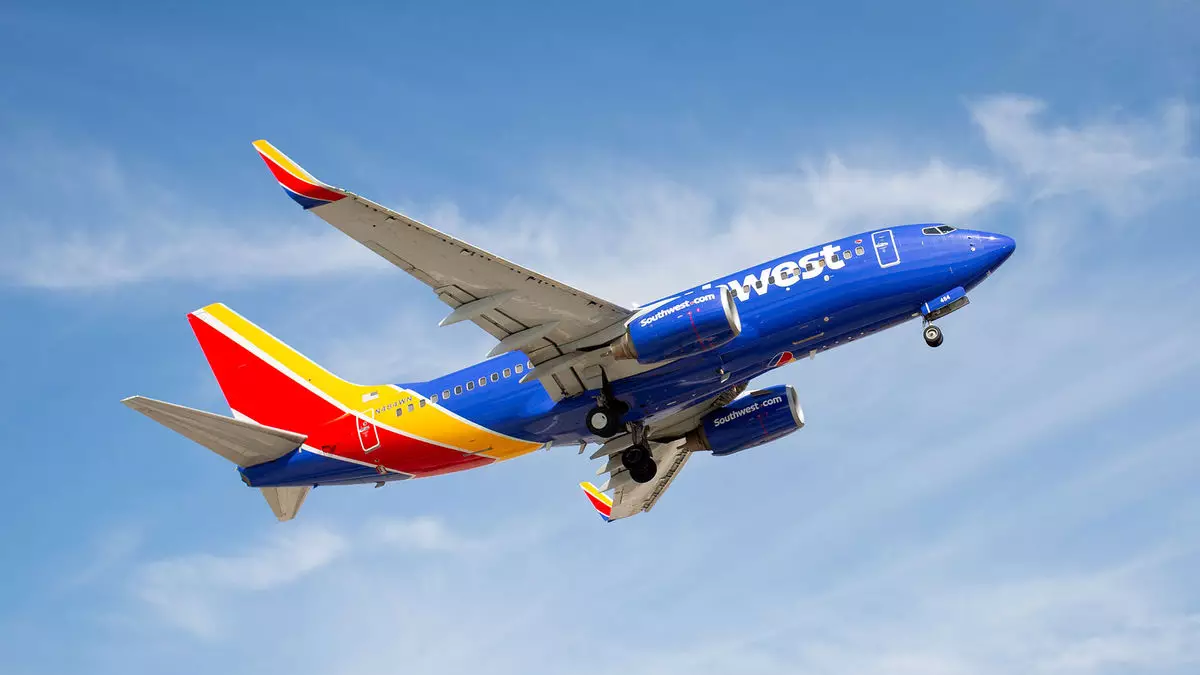In a bold maneuver designed to alter the strategic direction of Southwest Airlines, Elliott Investment Management has set the stage for potential upheaval within one of America’s most recognized carriers. Holding an 11% share of the airline, Elliott has petitioned for a special shareholders’ meeting scheduled for December 10, aiming to initiate substantial changes to the airline’s board of directors. This contentious demand for a proxy vote underscores the increasingly combative relationship between activist investors and corporate boards, drawing attention not just to the internal dynamics of Southwest Airlines, but also to broader implications for corporate governance.
Southwest Airlines has not held back in expressing its disdain for Elliott’s approach, characterizing the investment firm’s demands as “unnecessary and inappropriate.” The airline highlights the timing of this request, which it suggests is strategically aimed at disrupting its ongoing transformation efforts amidst one of the peak travel seasons. By opting for such a confrontational stance, Elliott risks tarnishing its reputation and alienating other shareholders who may prefer a less aggressive mode of corporate governance.
Elliott’s push for a special meeting is not merely a request for board vacancies; it is a calculated attempt to install a new leadership team amid criticisms of current management’s performance. Among its demands, Elliott seeks to oust eight sitting board members, including Chairman Gary Kelly, who is already slated to step down in May. Such a sweeping change in governance could lead to the dismissal of CEO Bob Jordan, another key target for Elliott.
The firm has compiled a slate of candidates for the board, featuring seasoned executives from the aviation and hospitality industries. Figures like former Air Canada CEO Robert Milton and former Virgin America CEO David Cush bring a wealth of experience that Elliott argues could steer Southwest back to operational profitability and enhanced shareholder value. This assertion is amplified by Elliott’s contention that the current management has allowed profit margins to deteriorate significantly since 2018, when Southwest led the pack of major U.S. airlines.
The performance metrics presented by Southwest indicate a troubling trend. With an operating profit of just $6 million on $13.7 billion in revenue in the first half of the year, the airline has seen better days. Despite having a reputation for low-cost travel and customer service, these figures highlight the pressure the company is under to innovate and adapt its business model to changing market demands.
Elliott’s criticisms target more than just financial outcomes; they represent a call for transformation within the corporate culture itself. The investment firm argues that while Southwest possesses a strong brand and cash reserves, the management’s failure to pivot and respond to industry shifts has placed the airline at a competitive disadvantage. By emphasizing critical shortcomings in fleet management and operational agility, Elliott frames its involvement as necessary for the rejuvenation of the airline.
In response to these challenges, Southwest’s leadership has unveiled an ambitious plan aiming to generate an additional $4 billion in revenue by 2027. Among the initiatives are the introduction of new seating arrangements and enhancements to customer experience, such as extra legroom and assigned seating. Notably, the airline aims to streamline operations with partnerships—such as the upcoming collaboration with Icelandair—thereby broadening its market reach.
Additionally, Southwest aims to enhance its cost-efficiency by leveraging new fleet utilization strategies, including the introduction of red-eye flights that promise to increase aircraft productivity. These moves underscore a proactive stance toward adversity, suggesting that the current management is attuned to shareholder concerns, albeit amidst a turbulent backdrop.
The battle between Elliott Investment Management and Southwest Airlines exemplifies the delicate balance of power in corporate governance while revealing the complexities of navigating a changing economic landscape. As the airline stands at a crossroads, it must weigh the implications of internal activism against its aspirations for long-term growth and stability. Whether Elliott’s disruptive approach ultimately leads to strategic rejuvenation or merely amplifies existing tensions will be a critical narrative to follow, shaping the future trajectory of one of America’s legacy airlines. Concerns about operational efficiencies continue to hang in the balance, but one thing remains clear: the corporate skies are anything but calm as this showdown unfolds.


Leave a Reply